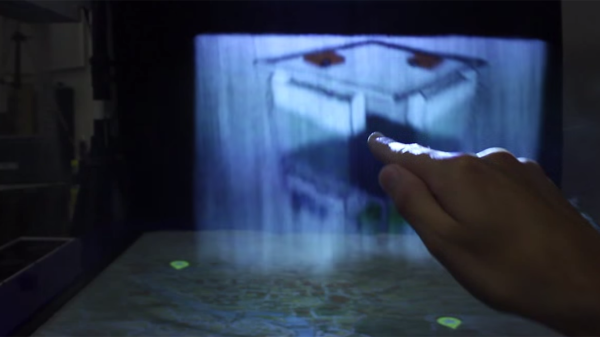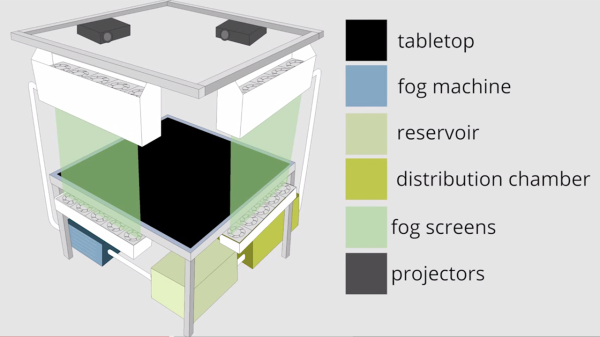MisTable is a fun new exploration that combines projection and mist to form a futuristic gestural interface that mirrors the best of Hollywood’s holographic movie effects. With Minority Report style gestures along with Iron Man like floating visuals made of mist and light, this next generation prototype enables a variety of new interactions that are sure to turn some heads. What makes mist such a compelling medium is that you can actually feel what you’re touching, even though it’s only water (among other fog enabling particulate). Very impressive.
Assembled by Diego martinez Plasencia, Edward Joyce, and Sriram Subramanian at the Bristol Interaction Group, MisTable enables interactions like passing 3D projected objects to collaborators across your table along with rotating 2D and 3D projected visuals. The prototype allows multiple mist projections to occur at once and uses a combination of Fourier Transform Infrared Spectroscopy (FTIR) table-top displays, multiple fog machines and Kinects/Leaps for 3D sensing:
In the author’s own words:
MisTable is a tabletop system that combines a conventional horizontal interactive surface with personal screens between the user and the tabletop surface. These personal screens, built using fog, are both see-through and reach-through. Being see-through provides direct line of sight of the personal screen and the elements behind it on the tabletop. Being reach-through allows the user to switch from interacting with the personal screen to reaching through it to interact with the tabletop or the space above it. The personal screen allows a range of customisations and novel interactions such as presenting 2D personal contents on the screen, 3D contents above the tabletop or augmenting and relighting tangible objects differently for each user. Besides, having a personal screen for each user allows us to customise the view of each of them according to their identity or preferences. Finally, the personal screens preserve all well-established tabletop interaction techniques like touch and tangible interactions. We explore the challenges in building such a reach-through system through a proof-of-concept implementation and discuss the possibilities afforded by the system.

